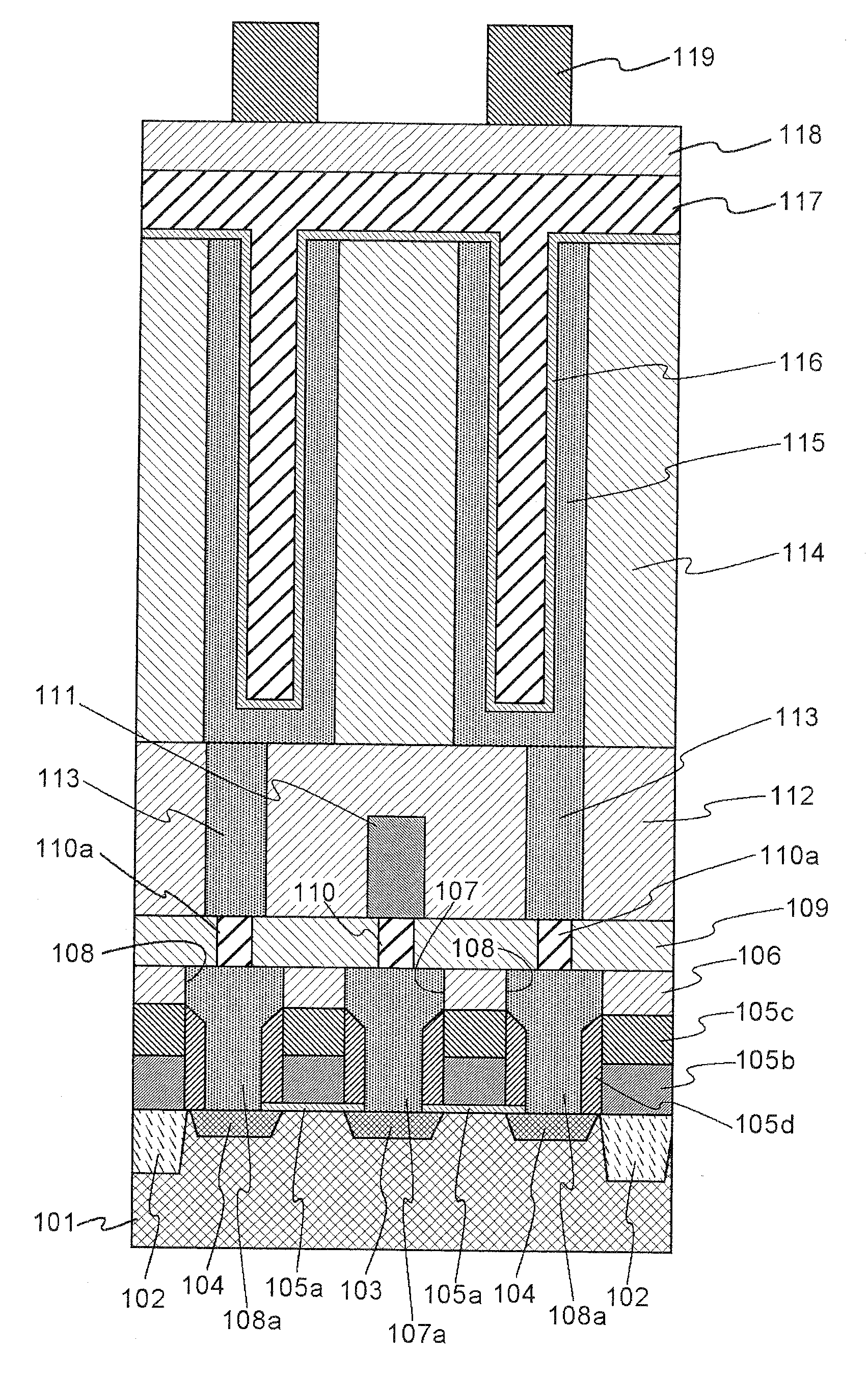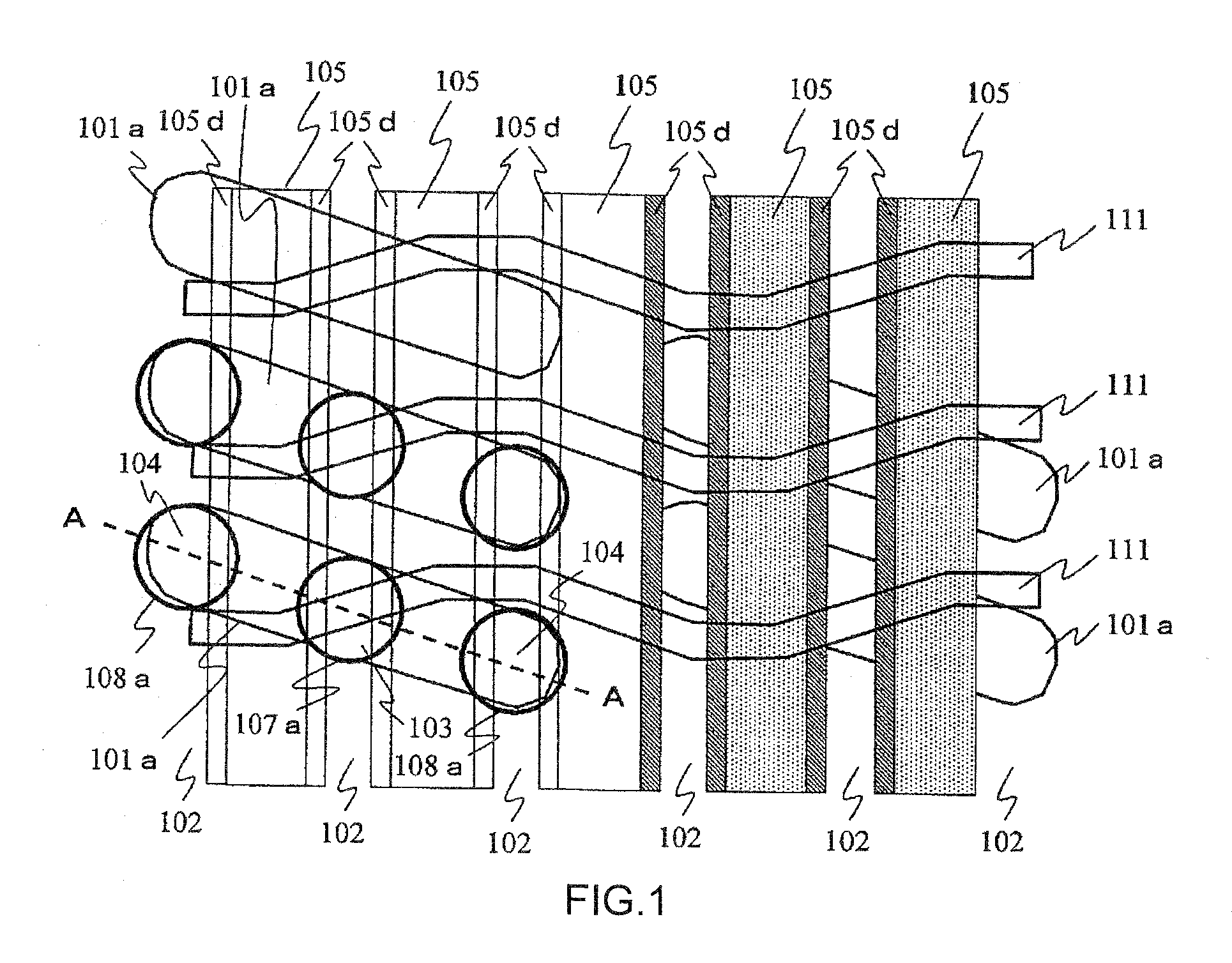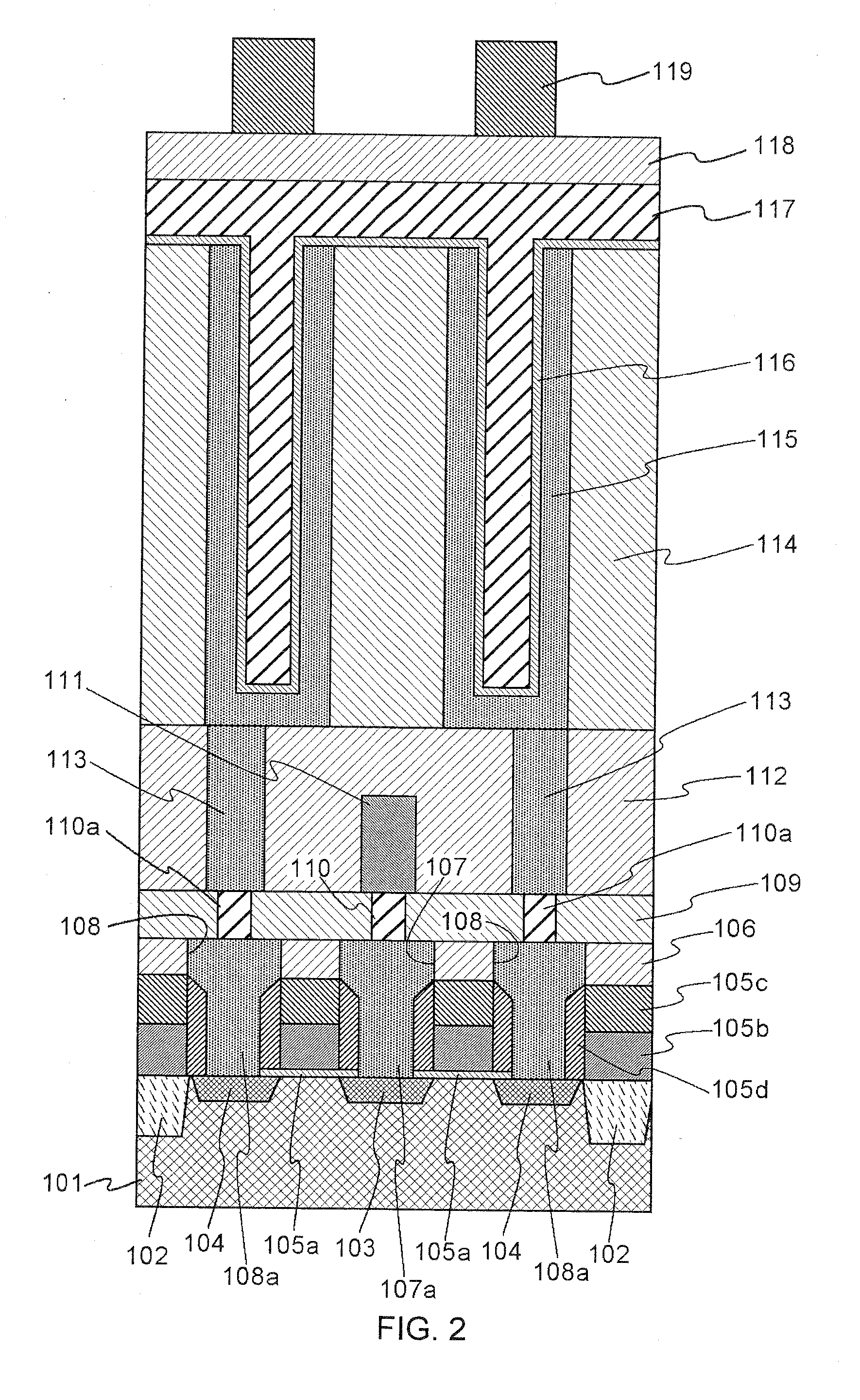Method for manufacturing a semiconductor device
a manufacturing method and semiconductor technology, applied in semiconductor devices, semiconductor/solid-state device details, electrical devices, etc., can solve the problems of difficult high-selective etching, and achieve the effect of preventing damage and increasing the surface roughness of the film
- Summary
- Abstract
- Description
- Claims
- Application Information
AI Technical Summary
Benefits of technology
Problems solved by technology
Method used
Image
Examples
first exemplary embodiment
[0030]A first exemplary embodiment will be described first, referring to cross-sectional views of FIGS. 4A to 4H illustrating a series of steps. The first exemplary embodiment uses an organic coating film to form contact plugs therein adjacent to word lines.
[0031]As shown in FIG. 4A, element isolation regions 102 were formed first, using an STI (Shallow Trench Isolation) process, in the surface of semiconductor substrate 101 made of p-type silicon to form active regions 101a shown in FIG. 1. Then, gate insulating film 105a made up of a silicon oxide film of 6 nm thick was formed on the surface of each active region using a thermal oxidation process. Also, gate electrode 105b of 140 nm thick and protection insulating film 105c made up of a silicon nitride film of 140 nm thick were formed overall. Gate electrode 105b were formed, from bottom up, of a phosphor-doped silicon film and a tungsten silicide film both formed by a CVD process, and a stacked film consisting of a tungsten nitri...
second exemplary embodiment
[0049]As have been described in the BACKGROUND OF THE INVENTION, when forming contact holes in an interlayer insulating film made up of a silicon oxide film, the protection insulating film on the gate electrode and the side walls are each required to be formed of a silicon nitride film in which etching speed is lower than in a silicon oxide film, in order to ensure selectivity of dry etching. Silicon nitride films have inherently been suffering from a problem of increasing parasite capacitance in wiring because of the large dielectric constant. In addition, there is a concern that, when a silicon nitride film is located in the vicinity of a channel of a transistor, function of the silicon nitride film as a charge trap may be a cause of fluctuating threshold voltage of the transistor. In this regard, contact holes in the present invention are formed in an organic coating film which does not require selectivity in etching performed for the silicon oxide film or the silicon nitride fil...
third exemplary embodiment
[0056]Referring now to cross-sectional views of FIGS. 4I to 4Q illustrating a series of steps, hereinafter is described a third exemplary embodiment taking an example, in which an organic coating film is used to form the capacitor contact plugs therein adjacent to the bit lines.
[0057]After forming first interlayer insulating film 106 made up of a silicon oxide film of 500 nm thick using an HDP process, as shown in FIG. 4H, the surfaces of contact plugs 107a and 108a were exposed, as shown in FIG. 4I, using a CMP process.
[0058]Then, as shown in FIG. 4J, second interlayer insulating film 109 made up of a silicon oxide film of 150 nm thick was formed, followed by forming second contact plugs 110a including bit-line contact plug 110 in each of predetermined regions in second interlayer insulating film 109. Second contact plugs 110 and 110a were formed by forming contact holes by lithography and dry etching and then by burying the contact holes with a titanium nitride film and tungsten f...
PUM
 Login to View More
Login to View More Abstract
Description
Claims
Application Information
 Login to View More
Login to View More - R&D
- Intellectual Property
- Life Sciences
- Materials
- Tech Scout
- Unparalleled Data Quality
- Higher Quality Content
- 60% Fewer Hallucinations
Browse by: Latest US Patents, China's latest patents, Technical Efficacy Thesaurus, Application Domain, Technology Topic, Popular Technical Reports.
© 2025 PatSnap. All rights reserved.Legal|Privacy policy|Modern Slavery Act Transparency Statement|Sitemap|About US| Contact US: help@patsnap.com



